Saturday, October 22, 2005
Silvered Æ antoninianus, Salonina, Antioch, Göbl 1637m
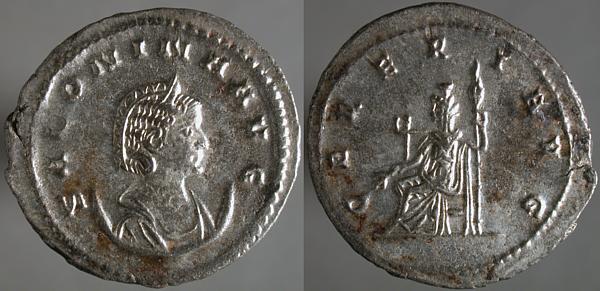
SALONINA AVG, Diademed draped bust right on crescent | CERERI AVG, Ceres seated left, holding scepter right and grain head left.
Ceres was an early Roman goddess of grain and of the harvest. She became associated with Demeter as the Romans adopted the Greek pantheon.
Friday, October 21, 2005
Æ19, Seleucia ad Calycadnum in Cilicia, Gallienus, SNG Levante 788
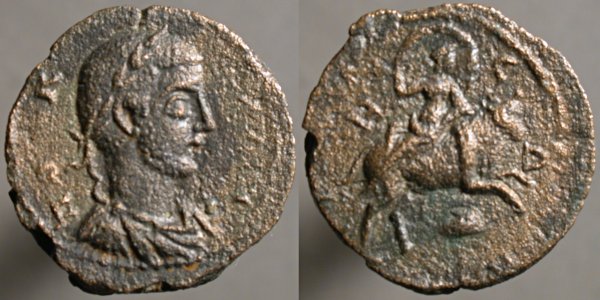
ΠPO [..]K [...], Laureate draped cuirassed bust right | [...]N[...]CΩ[...], Europa riding bull right; in both hands mantle flying over head; dolphin below.
The dolphin's a bit hard to make out here, since they were seen a bit differently in antiquity, with a thick body and head, and quite a thin tail.
This is the SNG Levante plate coin. When Classical Numismatic Group offered many coins from Eduardo Levante's collection for auction I bid on only a few, since it'd have been too expensive to try for all I wanted. Over the years since, I've bought a number of those I ignored then, and paid quite a premium for my earlier reticence.
Thursday, October 20, 2005
Billon antoninianus, Gallienus, Antioch, Göbl 1587derr
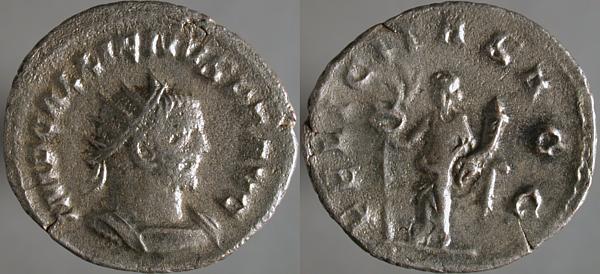
IMP GALLIENVS P F AVG, Radiate draped cuirassed bust right | FELICITAS AGG, Felicitas standing left, holding cornucopia right and long scepter left.
Engraver's errors aren't especially rare on coins of this time, but this is interesting. Apparently intended as part of this issue, even spelled correctly (VICTORIA AVGG) it's only known for Valerian, not for Gallienus as here.
Wednesday, October 19, 2005
Æ19, Seleukid Empire, Antiochos VIII & Cleopatra Thea, Sear GCV 7139var
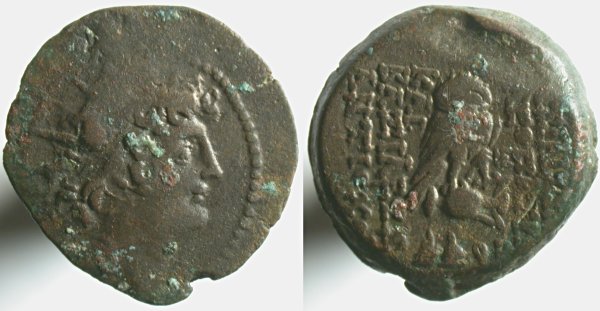
Radiate head of Helios right | Owl standing right on prostrate amphora, head facing. [BAΣI]ΛIΣΣHE [KΛ]EOΠATPAΣ right, KAI BAΣIΛEVE ANTIOXO[Y] right, uncertain date in exergue.
The Cleopatra named here isn't the famous queen of Ptolemaic Egypt, Cleopatra VII (c. 69 BCE - 30 BCE), but a different person entirely, the Seleukid queen Cleopatra Thea (c. 164 BCE - 121 BCE).
Seleukid bronzes are some of the commonest Helenistic Greek coins.
Tuesday, October 18, 2005
Æ28, Berytus in Phoenicia, Gallienus, BMC 264
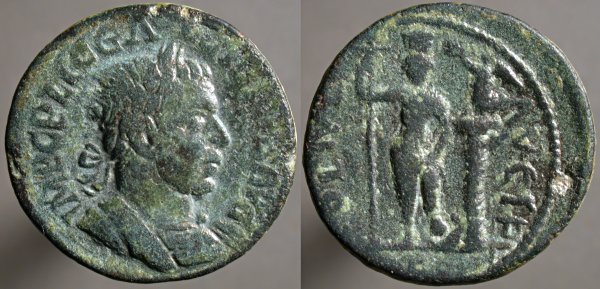
IMP C P LIC GALLIENVS AVG, Laureate cuirassed bust right | [C]OL IVL AVG FEL [B]ER, Astarte standing facing, right foot on galley, holding cruciform standard in right hand and aphlaston in left arm, crowned by Nike standing on column right.
I strongly suspect that it's based on a statue, perhaps one still well-known today, rather than a fresh creation, but I find this reverse one of the most artistic things I've seen on a coin of this era.
Any collection worth the effort of collecting is impossible to complete. But little bits of a collection can be completed. Here's such a case, trivial as it may be: completing the set; the same reverse for Valerian, Gallienus, and Salonina.
Berytus is now called Beirut, the capital of Lebanon.
Monday, October 17, 2005
Billon antoninianus, Gallienus, Antioch, Göbl 1569d
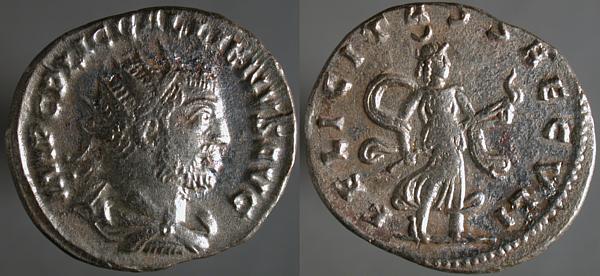
IMP C P LIC GALLIENVS AVG, Radiate draped cuirassed bust right | FELICITAS SAECVLI, Diana, with crescent on head, walking right, drapery flying, carrying long traverse torch.
Beast Coins has an example of this where someone removed most of the figure of Diana, leaving the drapery which resembles the large SC mark seen on early imperial bronze.
Sunday, October 16, 2005
Æ tetradrachm, Alexandria, Gallienus, Emmett 3823(13)
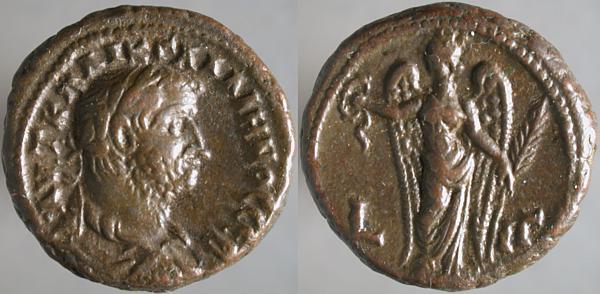
AVT K Π ΛIK ΓAΛΛIHNOC CEB, Laureate draped bust right | L_IΓ, Nike standing left, wings spread, raising wreath in right hand, holding palm in left. Regnal year across fields.
I strongly suspect that it's based on a statue, perhaps one still well-known today, rather than a fresh creation, but I find this reverse one of the most artistic things I've seen on a coin of this era.

